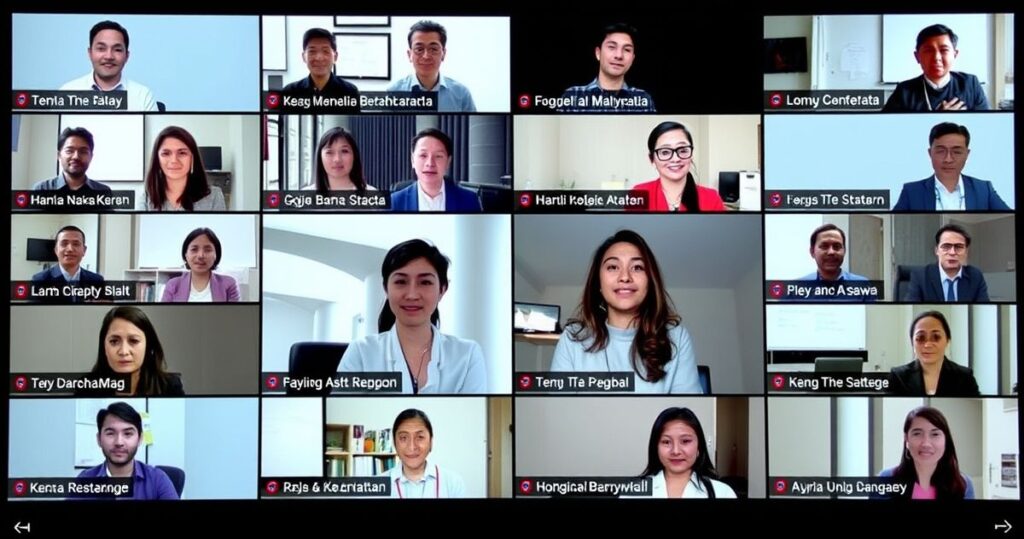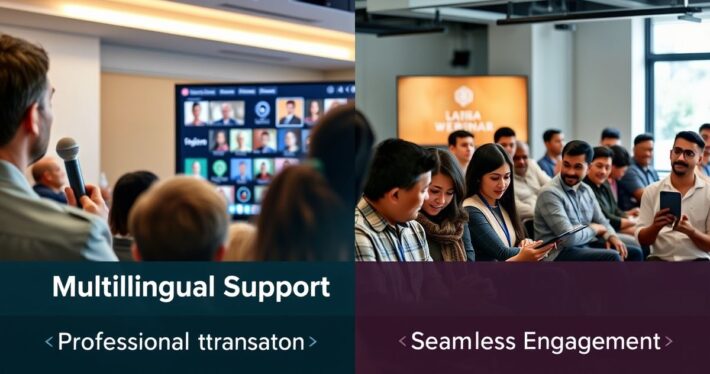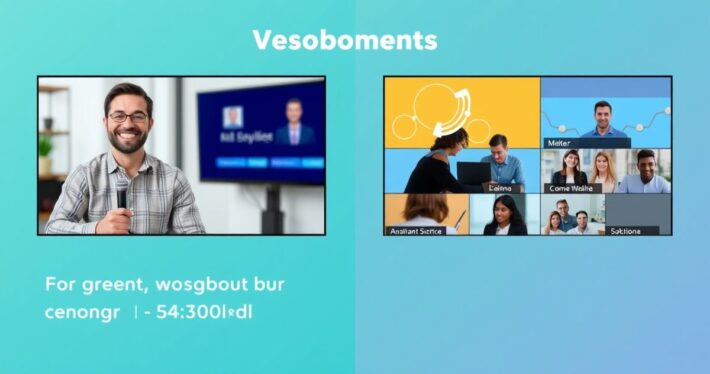Webinar success stories from multilingual audiences.

The Power of Multilingual Webinars: A Gateway to Global Engagement
In today’s interconnected world, webinars have become a cornerstone of digital marketing and audience engagement. But here’s the real game-changer: multilingual webinars. By breaking language barriers, businesses can tap into global markets, foster deeper connections, and significantly boost conversion rates. Research shows that content presented in a user’s native language increases engagement by up to 70%. Take for instance, a SaaS company that launched a series of Spanish webinars and saw a 200% increase in sign-ups from Latin America. Now, that’s what I call a win.
Multilingual webinars aren’t just about translating content—it’s about cultural adaptation, strategic planning, and leveraging the right tools to deliver a seamless, high-converting experience. Let’s dive into some real-world success stories and uncover the strategies that made them thrive.
Story 1: How a Tech Startup Expanded into Asian Markets
Meet InnovateTech, a software company that wanted to expand into Japan, South Korea, and China. The challenge? Their English-only webinars weren’t resonating. So, they decided to go multilingual.
Here’s what they did:
- Localized Content: They hired native speakers to adapt their presentations, ensuring cultural relevance and linguistic accuracy.
- AI-Powered Translation Tools: They used AI tools like speech-to-text and real-time translation to make the webinar accessible live.
- Follow-Up in Local Languages: Post-webinar emails and resources were translated to maintain momentum.
The result? A 300% increase in qualified leads from these regions. The key takeaway? Don’t just translate—adapt.
Story 2: A Health & Wellness Brand’s Spanish-Language Breakthrough
WellnessCo, a fitness brand, wanted to target the rapidly growing Spanish-speaking market in the U.S. They launched a series of Spanish-language webinars featuring local influencers.
Their strategy included:
- Cultural Alignment: They incorporated Latin music, relatable stories, and culturally relevant fitness trends.
- Engagement Tools: Interactive polls and Q&A sessions made the audience feel valued.
- Localized Offers: They created Spanish-exclusive discounts and bonuses.
The outcome? A 150% boost in sales and a loyal Spanish-speaking customer base.
Tools and Tactics for Multilingual Webinar Success
Creating a multilingual webinar isn’t just about hiring translators. It’s about building a system that ensures clarity, engagement, and conversion. Here’s how you can do it:
1. Leverage AI-Powered Tools
AI tools like real-time translation software and multilingual chatbots can make your webinar accessible to a global audience. For example, platforms like Zoom now offer live transcription in multiple languages.
2. Invest in Native Speakers
While AI is great, nothing beats the nuance of a native speaker. Hire local experts to adapt your content and ensure cultural sensitivity.
3. Localize Your Offers
Why stop at the webinar? Tailor your pricing, bonuses, and guarantees to fit the economic context of each market.
4. Use Interactive Elements
Polls, surveys, and live Q&A sessions in multiple languages can significantly boost engagement.
5. Follow Up in Local Languages
Post-webinar emails, resources, and offers should match the language and tone of your webinar.
Real-World Example: Multilingual Webinar Funnel That Converts
Let’s look at a case study from EduGlobal, an online education platform. They wanted to target Spanish, French, and German-speaking markets. Here’s their funnel:
| Stage | Action | Result |
|---|---|---|
| Landing Page | Multilingual landing pages with clear CTAs | 40% increase in sign-ups |
| Webinar | Live webinar with real-time translation | 80% attendance rate |
| Follow-Up | Emails and resources in local languages | 60% conversion rate |
This approach not only increased their reach but also built trust with their audience.
Overcoming Challenges in Multilingual Webinars
Of course, it’s not all smooth sailing. Multilingual webinars come with their own set of challenges:
- Technical Glitches: Real-time translation tools can sometimes falter. Test your tech stack thoroughly before going live.
- Cultural Missteps: What works in one culture might offend another. Always consult local experts.
- Time Zone Woes: Scheduling a live webinar for global audiences can be tricky. Consider recording and offering on-demand access.
But here’s the good news: with the right tools and strategies, these challenges are easily manageable.
The Future of Multilingual Webinars
As businesses continue to globalize, multilingual webinars will become the norm rather than the exception. AI advancements will make real-time translation more seamless, and cultural adaptation tools will become more sophisticated.
So, are you ready to take your webinars global? The opportunities are endless, and the impact is undeniable.



